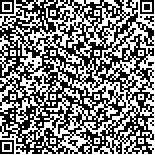| 引用本文: |
王健章,屈梦媛,俞赟丰,殷双,林凡,简维雄.《古今名医临证金鉴》论治淋证的用药规律研究[J].湖南中医药大学学报,2022,42(2):296-301[点击复制] |
|
| |
|
|
| 本文已被:浏览 2544次 下载 880次 |
| 《古今名医临证金鉴》论治淋证的用药规律研究 |
| 王健章,屈梦媛,俞赟丰,殷双,林凡,简维雄 |
| (石门县中医医院, 湖南 常德 415339;湖南中医药大学中医学院, 湖南 长沙 410208) |
| 摘要: |
| 目的 探讨古今名医论治淋证的用药规律,为临床用药选方提供借鉴。方法 整理《古今名医临证金鉴》中历代名医论治淋证的有效经验方,将复方录入Excel 2010建立数据库,采用古今医案云平台V2.3进行单味中药的频次分析、中药属性频次分析、关联规则和聚类分析,采用SPSS Statistics 25.0进行因子分析。结果 共纳入86位医家的382首经验方,涉及中药482味,获得茯苓、黄柏、泽泻、车前子、甘草等核心中药15味。药性以寒为主,药味以甘、苦为主,归经以肺、肾经为主,功效以利尿通淋、利水渗湿最为多见。关联规则获得泽泻-茯苓、知母-黄柏、黄柏-茯苓等22个核心药对。因子分析获得“黄柏、知母、萆薢”“滑石、甘草、木通”“茯苓、泽泻”等6个公因子,聚类分析获得5个聚类方。结论 《古今名医临证金鉴》中古今医家治疗淋证的核心中药为茯苓、黄柏、泽泻、车前子、甘草等,以利尿通淋、健脾利湿、补益脾肾、益气养血为主要治法,常用六一散、化阴煎、茯苓泽泻汤、生地山药羊肉汤、当归补血汤等方加减治疗。 |
| 关键词: 淋证 古今名医临证金鉴 用药规律 利尿通淋 利水渗湿 聚类分析 |
| DOI:10.3969/j.issn.1674-070X.2022.02.021 |
| 投稿时间:2021-08-05 |
| 基金项目:湖南中医药大学校级研究生培养质量工程项目(2018CX28,2020CX57)。 |
|
| Research on medication rules in the treatment of stranguria in Ancient and Modern Doctors Clinical Experience |
| WANG Jianzhang,QU Mengyuan,YU Yunfeng,YIN Shuang,LIN Fan,JIAN Weixiong |
| (Shimen Hospital of Chinese Medicine, Changde, Hunan 415339, China;College of Chinese Medicine, Hunan University of Chinese Medicine, Changsha, Hunan 410208, China) |
| Abstract: |
| Objective To explore the medication rules of ancient and modern famous doctors in the treatment of stranguria, so as to provide reference for clinical medication selection. Methods The effective empirical prescriptions of the famous doctors in the past dynasties on the treatment of stranguria in Ancient and Modern Doctors Clinical Experience were sorted out, and the compound prescriptions were entered into Excel 2010 to establish a database. The ancient and modern medical record cloud platform (V2.3) was used for frequency analysis of single Chinese medicine, frequency analysis of Chinese medicine attributes, association rules and cluster analysis, and SPSS Statistics 25.0 was used for factor analysis. Results A total of 382 empirical prescriptions of 86 doctors were included, involving 482 kinds of Chinese medicine, and 15 core traditional Chinese medicines including Fuling (Poria), Huangbo (Phellodendri Chinensis Cortex), Zexie (Alismatis Rhizoma), Cheqianzi (Plantaginis Semen), Gancao (Glycyrrhizae Radix Et Rhizoma) were obtained. The medicine was mainly cold, and the taste was mainly sweet and bitter. The main channels were lung and kidney. The most common effects were promoting diuresis and relieving stranguria, clearing damp and promoting diuresis. 22 core pairs of Zexie (Alismatis Rhizoma)-Fuling (Poria), Zhimu (Anemarrhenae Rhizoma)-Huangbo (Phellodendri Chinensis Cortex), Huangbo (Phellodendri Chinensis Cortex)-Fuling (Poria) were obtained by association rules. Six factors were obtained by factor analysis, such as "Huangbo (Phellodendri Chinensis Cortex), Zhimu (Anemarrhenae Rhizoma), Bixie (Dioscoreae Hypoglaucae Rhizoma)" "Huashi (Talcum), Gancao (Glycyrrhizae Radix Et Rhizoma), Mutong (Akebiae Caulis)" "Fuling (Poria), Zexie (Alismatis Rhizoma)", and five clustering formulas were obtained by cluster analysis. Conclusion The core Chinese medicine for treating stranguria in Ancient and Modern Doctors Clinical Experience is Fuling (Poria), Huangbo (Phellodendri Chinensis Cortex), Zexie (Alismatis Rhizoma), Cheqianzi (Plantaginis Semen), Gancao (Glycyrrhizae Radix Et Rhizoma), etc. The main treatment methods are promoting diuresis and relieving stranguria, tonifying spleen and dampness, tonifying kidney and spleen, tonifying Qi and nourishing blood. They commonly used Liuyi Powder, Huayin Decoction, Fuling Zexie Decoction, Shengdi Shanyao Yangrou Decoction, Danggui Buxue Decoction, etc. |
| Key words: stranguria Ancient and Modern Doctors Clinical Experience medication rule promoting diuresis and relieving stranguria clearing damp and promoting diuresis cluster analysis |
|

二维码(扫一下试试看!) |
|
|
|
|




